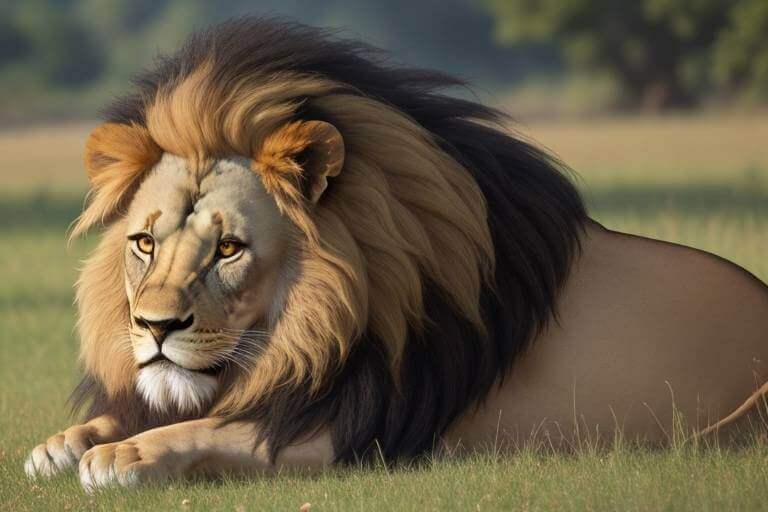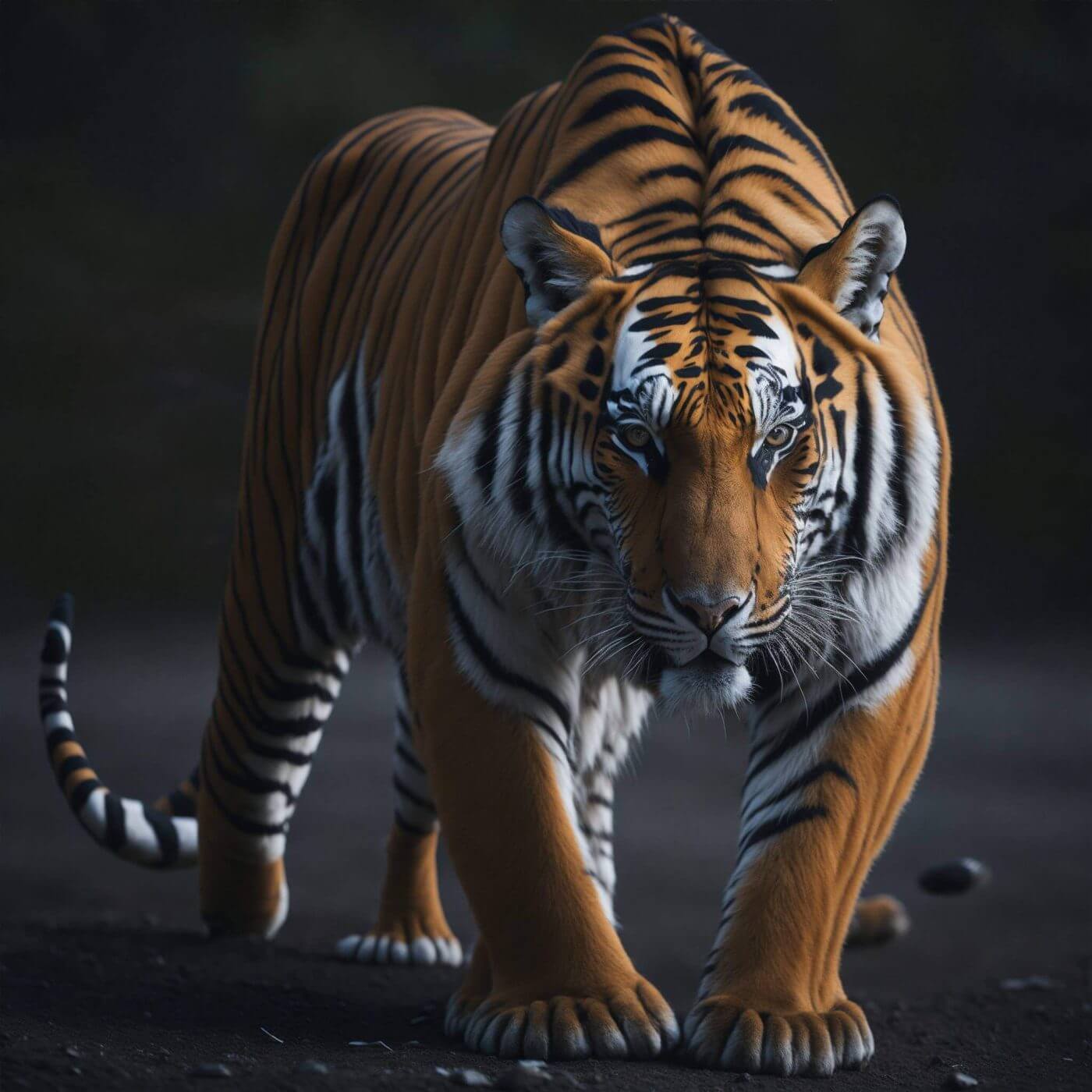Introduction to the World’s Biggest Cat Species
The world’s biggest cat species are truly magnificent creatures that captivate our imagination and inspire awe. From the majestic Siberian tiger to the powerful African lion, these animals are not only fascinating to study, but also play a crucial role in maintaining the delicate balance of their ecosystems. Understanding these big cats is essential for their conservation and for the preservation of biodiversity.
Evolutionary History of Big Cats
The evolutionary history of big cats dates back millions of years. They belong to the Felidae family, which includes both big and small cats. The ancestors of big cats were small, tree-dwelling carnivores that lived around 25 million years ago. Over time, they evolved into larger and more specialized predators, adapting to different habitats and becoming the top predators in their respective ecosystems.
The Siberian Tiger: Largest of the Tiger Species
The Siberian tiger, also known as the Amur tiger, is the largest of all tiger species and one of the most iconic big cats in the world. It can reach lengths of up to 10 feet and weigh over 600 pounds. These magnificent creatures are found in the forests of eastern Russia and parts of China and North Korea.
Unfortunately, the Siberian tiger is critically endangered due to habitat loss and poaching. Conservation efforts have been put in place to protect their population, including the establishment of protected areas and anti-poaching measures. However, more needs to be done to ensure their survival in the wild.
The African Lion: King of the Jungle
The African lion is often referred to as the king of the jungle, and for good reason. With its majestic mane and powerful build, it is a symbol of strength and courage. African lions are found in sub-Saharan Africa, where they inhabit grasslands, savannas, and open woodlands.
Lions play a crucial role in African culture and are often depicted in folklore and art. However, their population has declined significantly in recent years due to habitat loss, poaching, and conflict with humans. Conservation efforts are underway to protect these magnificent creatures, including the establishment of protected areas and community-based conservation initiatives.
The Liger: A Hybrid of Lion and Tiger
The liger is a hybrid cross between a male lion and a female tiger. It is the largest of all known cat species, weighing up to 900 pounds and measuring over 10 feet in length. Ligers have physical characteristics that resemble both lions and tigers, with a lion-like body and tiger-like stripes.
Ligers are not found in the wild as they are a result of captive breeding. They are often bred for their size and novelty value, but there are concerns about the ethics of breeding these hybrids. Ligers also face health issues due to their hybrid nature, such as infertility and growth abnormalities.
The Jaguar: Largest Cat in the Americas
The jaguar is the largest cat species in the Americas and is known for its powerful build and distinctive rosette patterns on its fur. Jaguars are found in Central and South America, where they inhabit a variety of habitats including rainforests, swamps, and grasslands.
Jaguars are apex predators in their ecosystems and play a crucial role in maintaining the balance of their habitats. However, they are facing numerous threats, including habitat loss, poaching, and conflict with humans. Conservation efforts are underway to protect these magnificent creatures, including the establishment of protected areas and anti-poaching measures.
The Leopard: A Stealthy and Powerful Predator
The leopard is a stealthy and powerful predator that is found in various habitats across Africa and Asia. It is known for its adaptability and ability to thrive in a wide range of environments, from rainforests to deserts. Leopards have a distinctive spotted coat that helps them blend into their surroundings and remain hidden from their prey.
Leopards are important predators in their respective habitats and play a crucial role in maintaining the balance of their ecosystems. However, they are facing numerous threats, including habitat loss, poaching, and conflict with humans. Conservation efforts are underway to protect these magnificent creatures, including the establishment of protected areas and community-based conservation initiatives.
The Cougar: A Solitary Hunter of North America
The cougar, also known as the mountain lion or puma, is a solitary hunter that is found in North and South America. It is known for its agility and ability to jump long distances, making it an efficient predator. Cougars have a wide range of habitats, from mountains to forests, and can adapt to various environments.
Cougars are facing numerous threats, including habitat loss, poaching, and conflict with humans. Conservation efforts are underway to protect these magnificent creatures, including the establishment of protected areas and anti-poaching measures. However, more needs to be done to ensure their survival in the wild.
The Cheetah: The Fastest Land Animal
The cheetah is the fastest land animal, capable of reaching speeds of up to 70 miles per hour in short bursts. It is known for its slender build, long legs, and distinctive black tear stripes on its face. Cheetahs are found in sub-Saharan Africa and parts of Iran, where they inhabit grasslands and savannas.
Cheetahs are facing numerous threats, including habitat loss, poaching, and conflict with humans. Conservation efforts are underway to protect these magnificent creatures, including the establishment of protected areas and community-based conservation initiatives. However, more needs to be done to ensure their survival in the wild.
The Clouded Leopard: A Rare and Elusive Species
The clouded leopard is a rare and elusive species that is found in the forests of Southeast Asia. It is known for its cloud-like markings on its fur, which help it blend into its surroundings. Clouded leopards are highly adapted to their arboreal lifestyle, with long tails and sharp claws that enable them to climb trees with ease.
Clouded leopards play a crucial role in maintaining the balance of their ecosystems, as they are top predators in their habitats. However, they are facing numerous threats, including habitat loss, poaching, and illegal wildlife trade. Conservation efforts are underway to protect these magnificent creatures, including the establishment of protected areas and anti-poaching measures.
Threats to Big Cat Populations and Conservation Efforts
Big cat populations around the world are facing numerous threats that are pushing them towards extinction. Habitat loss and fragmentation due to human activities, such as deforestation and urbanization, are one of the biggest threats to their survival. As their habitats shrink, big cats are forced into smaller and more isolated areas, making them more vulnerable to poaching and other threats.
Poaching is another major threat to big cat populations, driven by the demand for their body parts in traditional medicine and the illegal wildlife trade. Big cats are also often killed in retaliation for preying on livestock or as trophies in trophy hunting.
Conservation efforts are underway to protect big cat populations and ensure their survival in the wild. These efforts include the establishment of protected areas, anti-poaching measures, community-based conservation initiatives, and public awareness campaigns. However, more needs to be done to address the root causes of the threats facing big cats and to ensure their long-term survival.
The Future of Big Cats: Challenges and Opportunities for Conservation
The future of big cats is at a critical juncture, with many species facing the risk of extinction. The challenges facing big cat conservation are numerous and complex, but there are also opportunities for positive change.
One of the biggest challenges is the loss and fragmentation of their habitats due to human activities. To address this, it is crucial to promote sustainable land use practices and protect key habitats through the establishment of protected areas and wildlife corridors.
Another challenge is the illegal wildlife trade, which drives poaching and the trafficking of big cat body parts. To combat this, it is essential to strengthen law enforcement efforts, increase penalties for wildlife crimes, and raise awareness about the negative impacts of the illegal wildlife trade.
Opportunities for conservation lie in the power of collaboration and community involvement. By working together with local communities, governments, NGOs, and other stakeholders, we can develop sustainable solutions that benefit both people and big cats. Education and public awareness campaigns are also key in changing attitudes and behaviors towards big cats and their conservation.
Conclusion
In conclusion, the world’s biggest cat species are not only fascinating creatures, but also play a crucial role in maintaining the balance of their ecosystems. From the Siberian tiger to the African lion, these magnificent animals are facing numerous threats that are pushing them towards extinction. However, there is hope for their survival through conservation efforts and public support.
It is important for individuals to take action and support big cat conservation efforts. This can be done through donations to reputable conservation organizations, volunteering in conservation projects, and spreading awareness about the threats facing big cats. By working together, we can ensure a future where these majestic creatures continue to roam the wild and inspire awe for generations to come.





